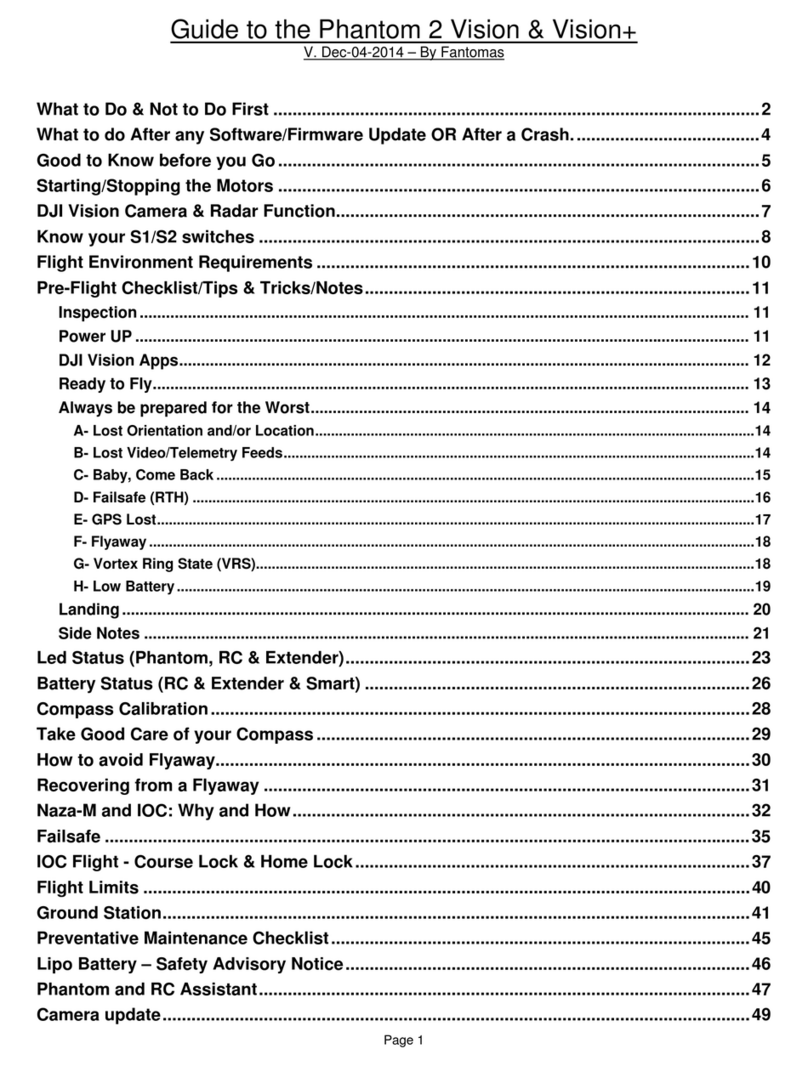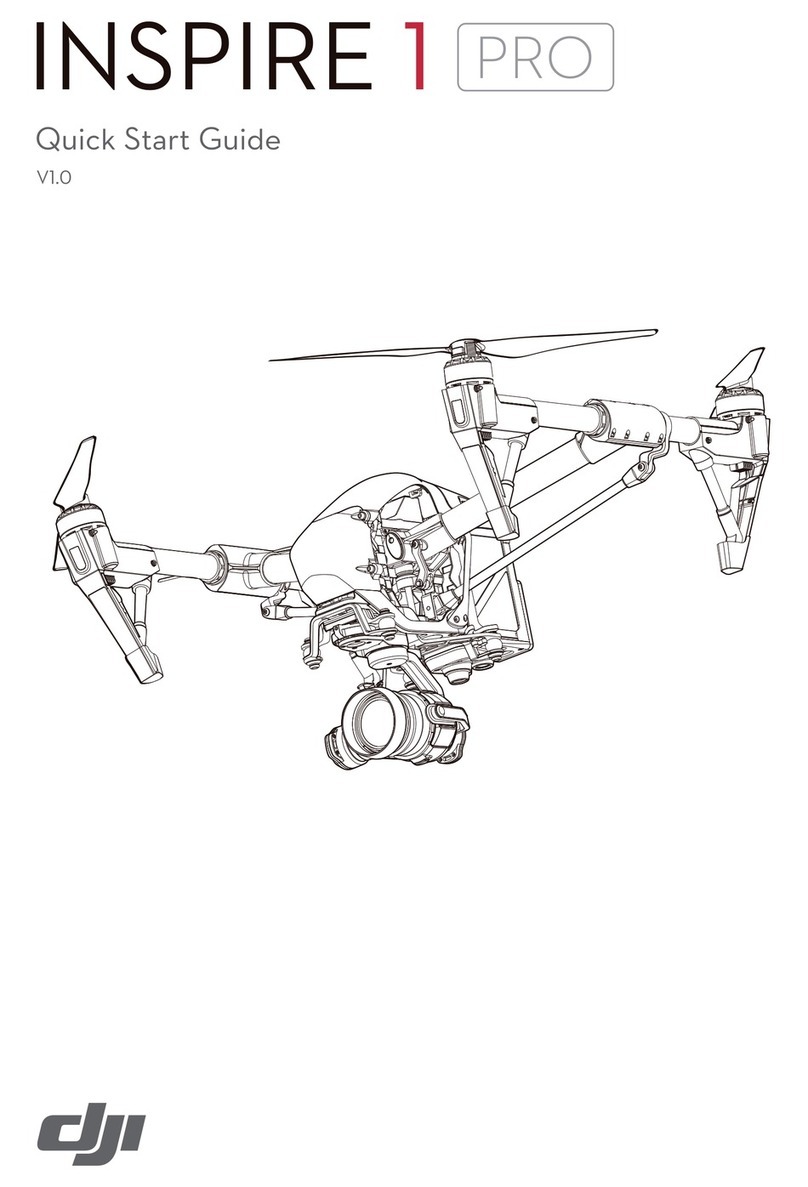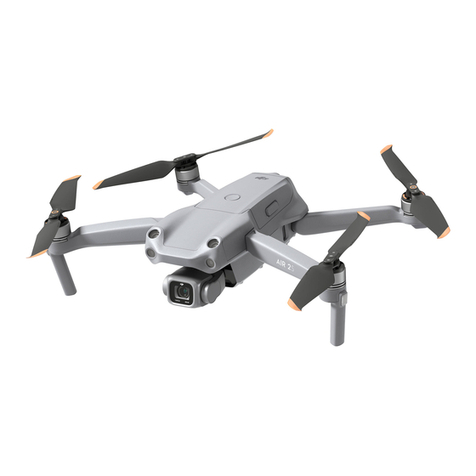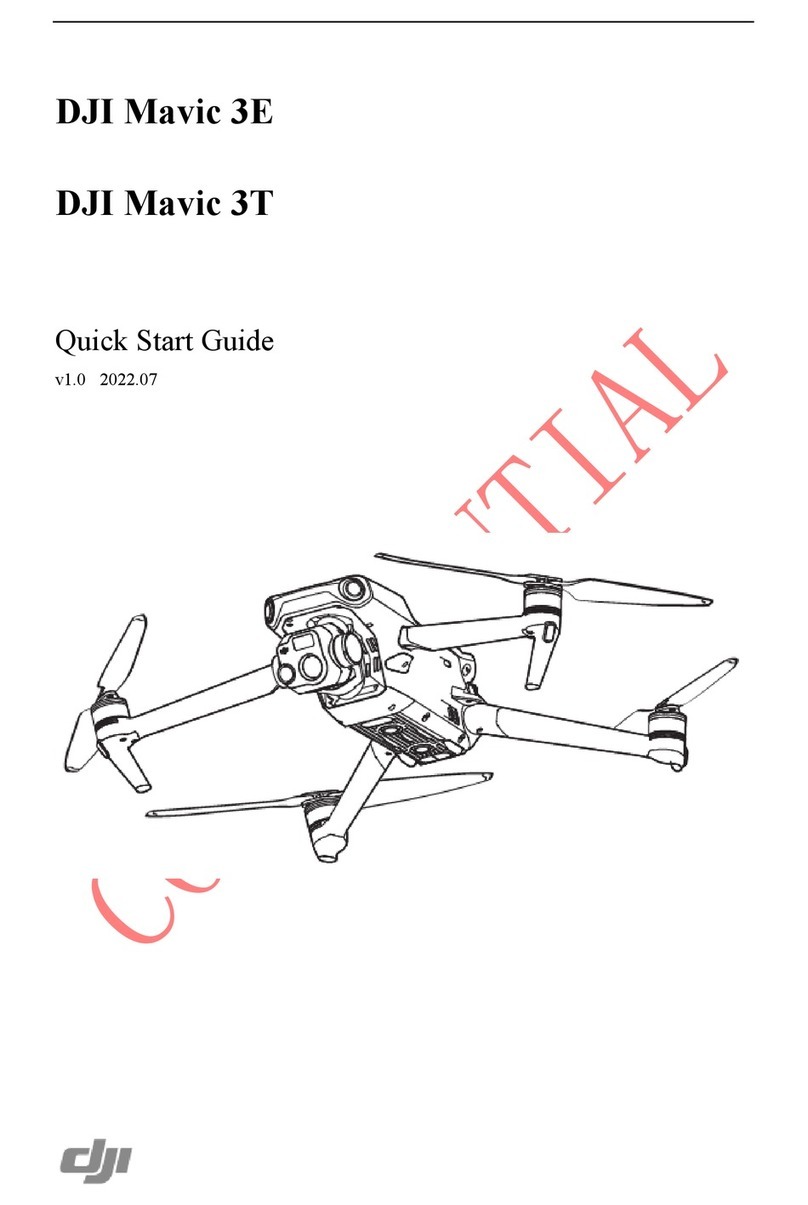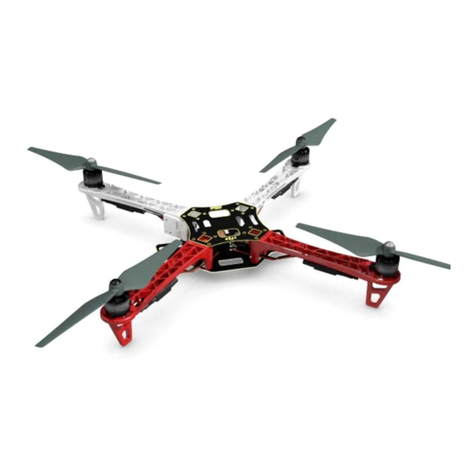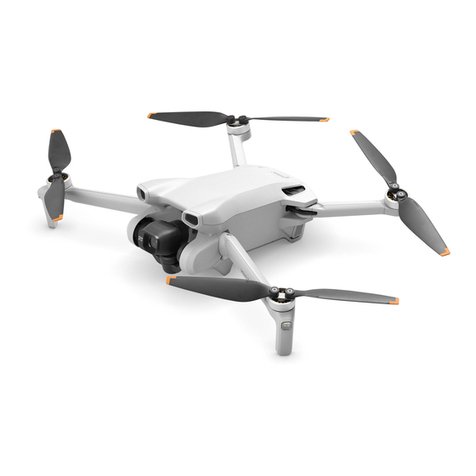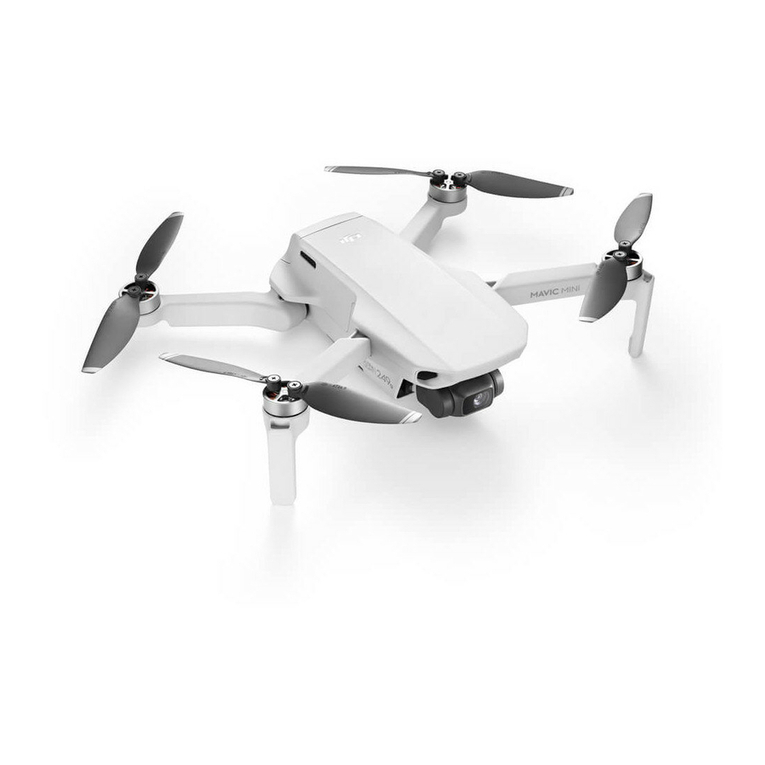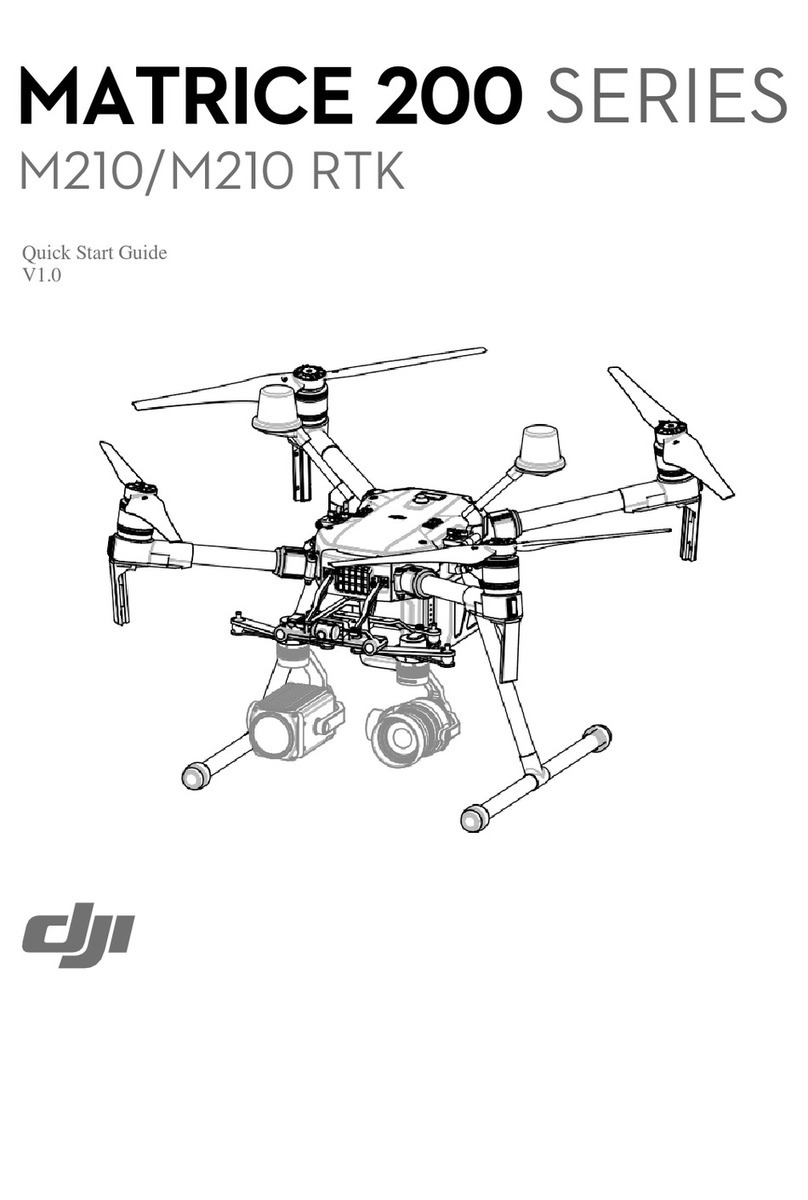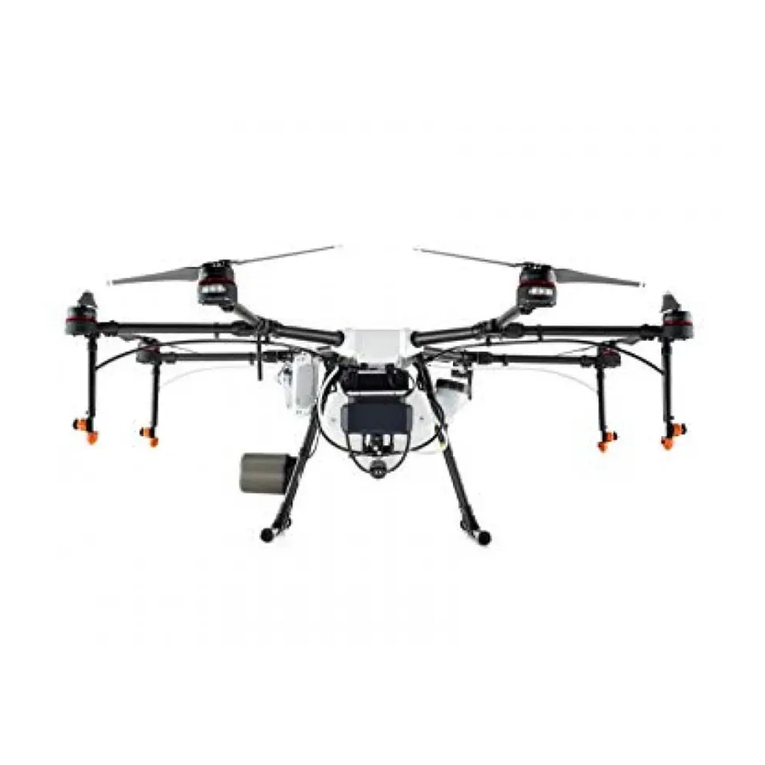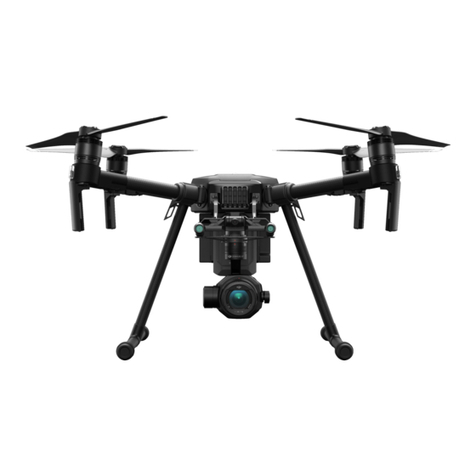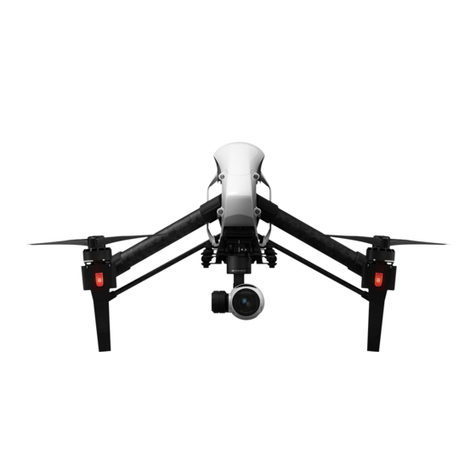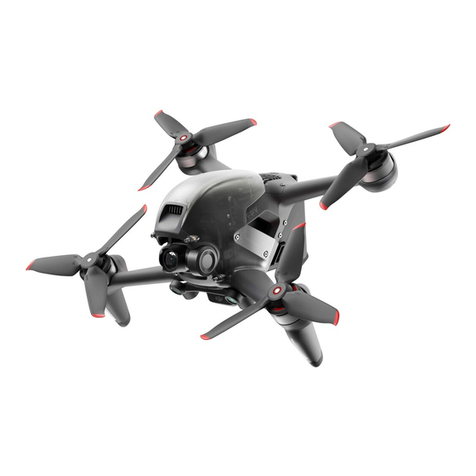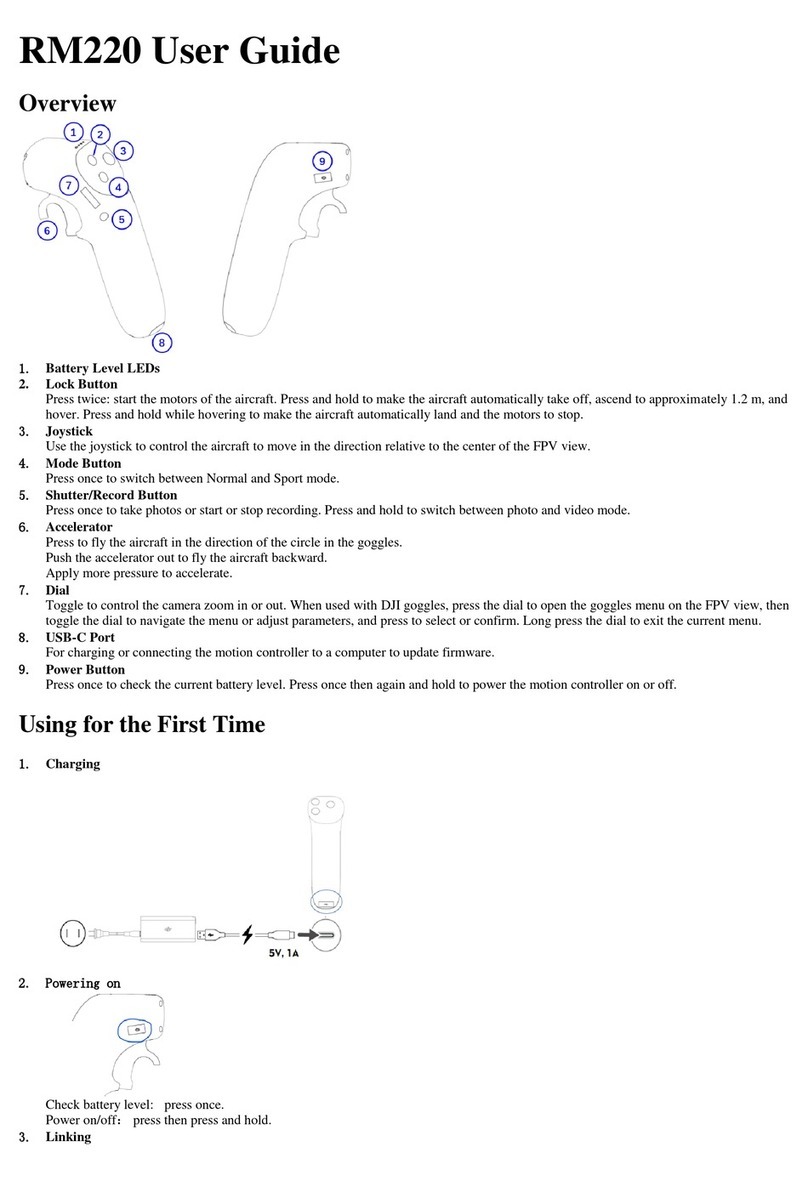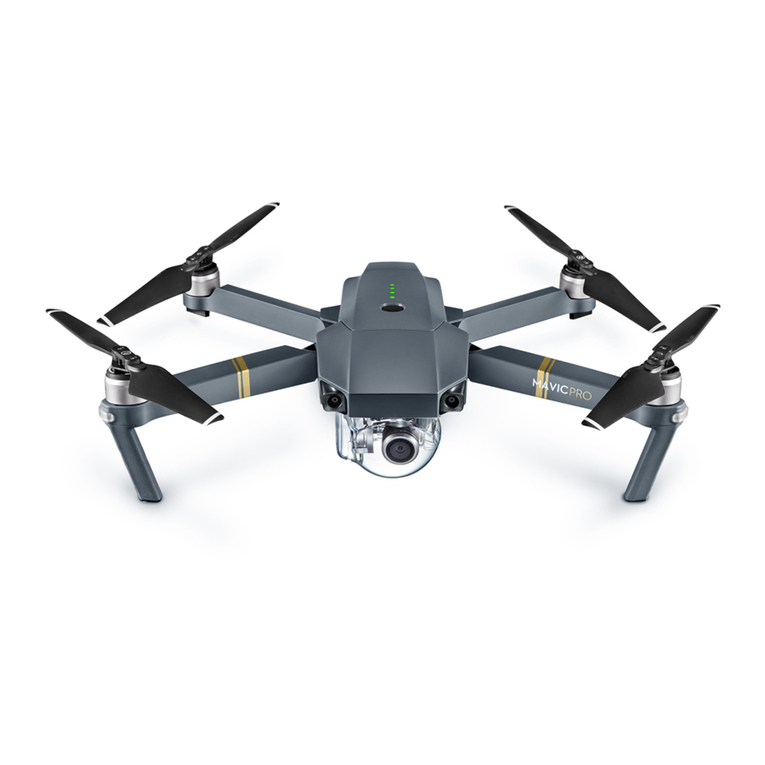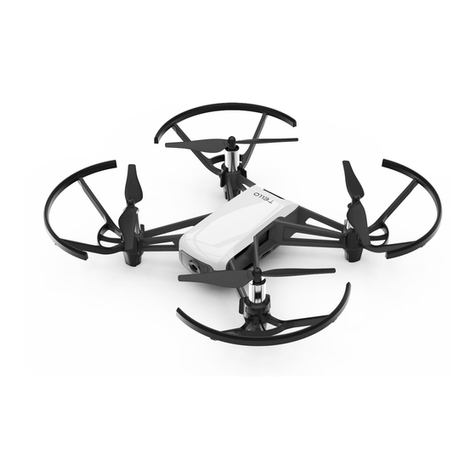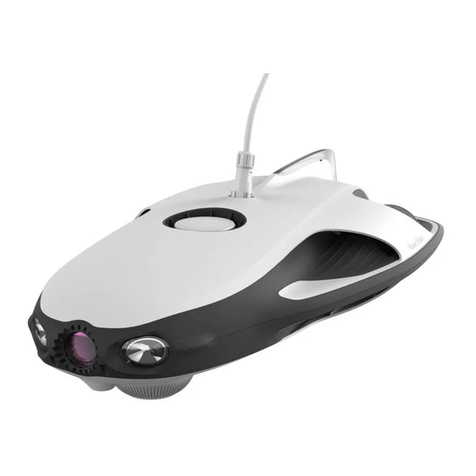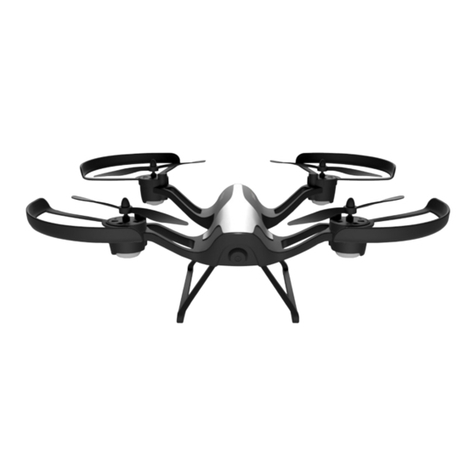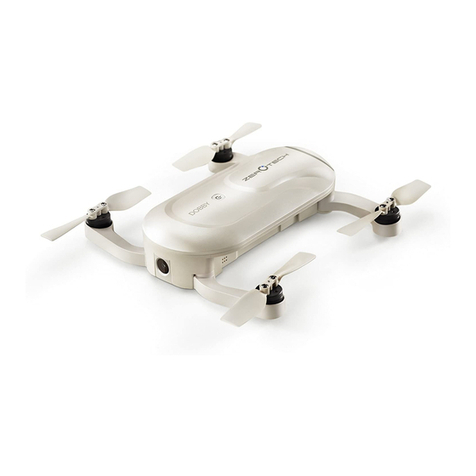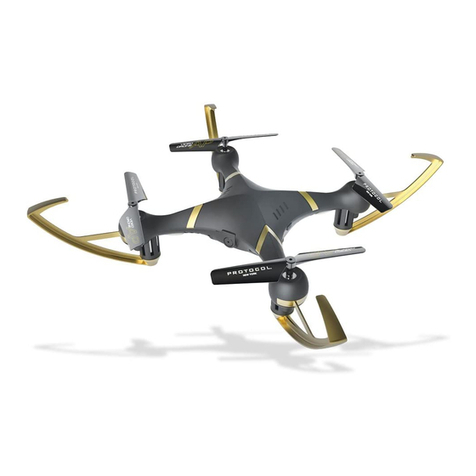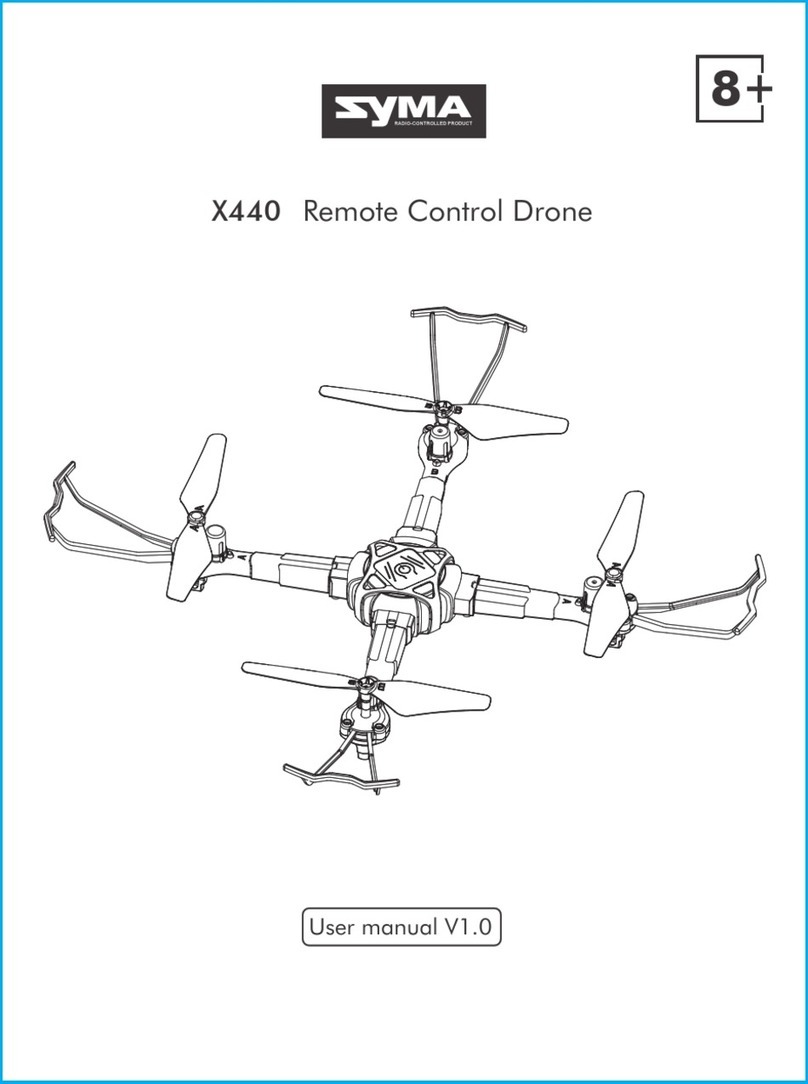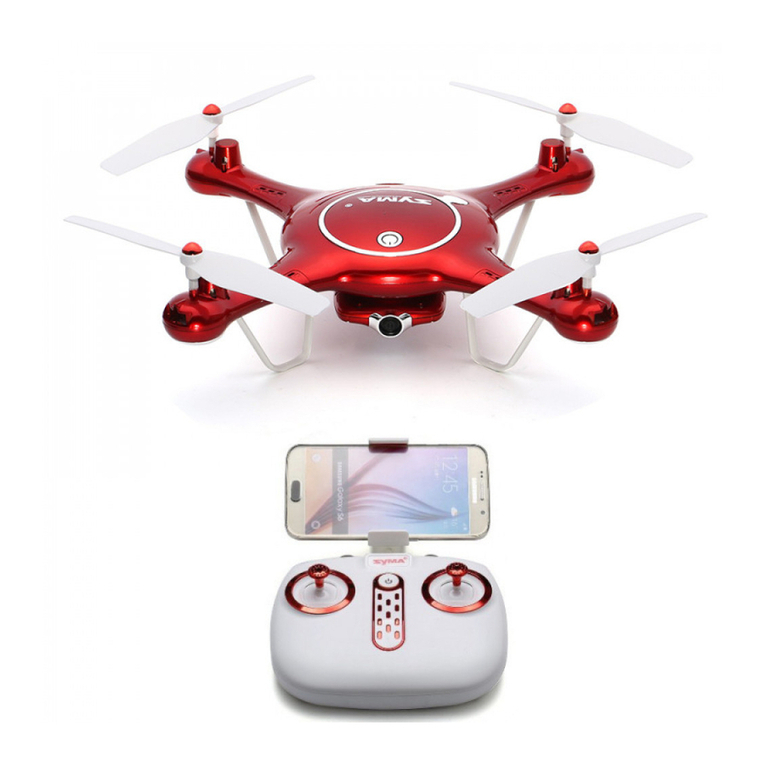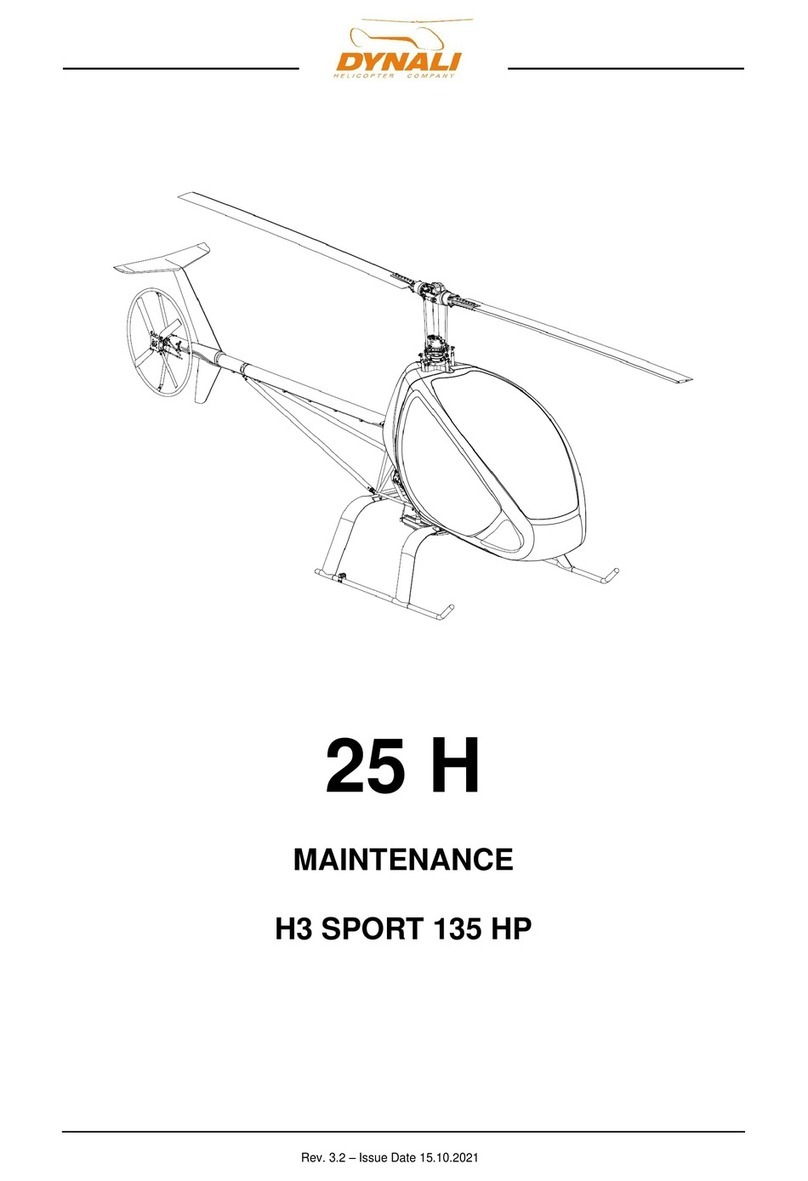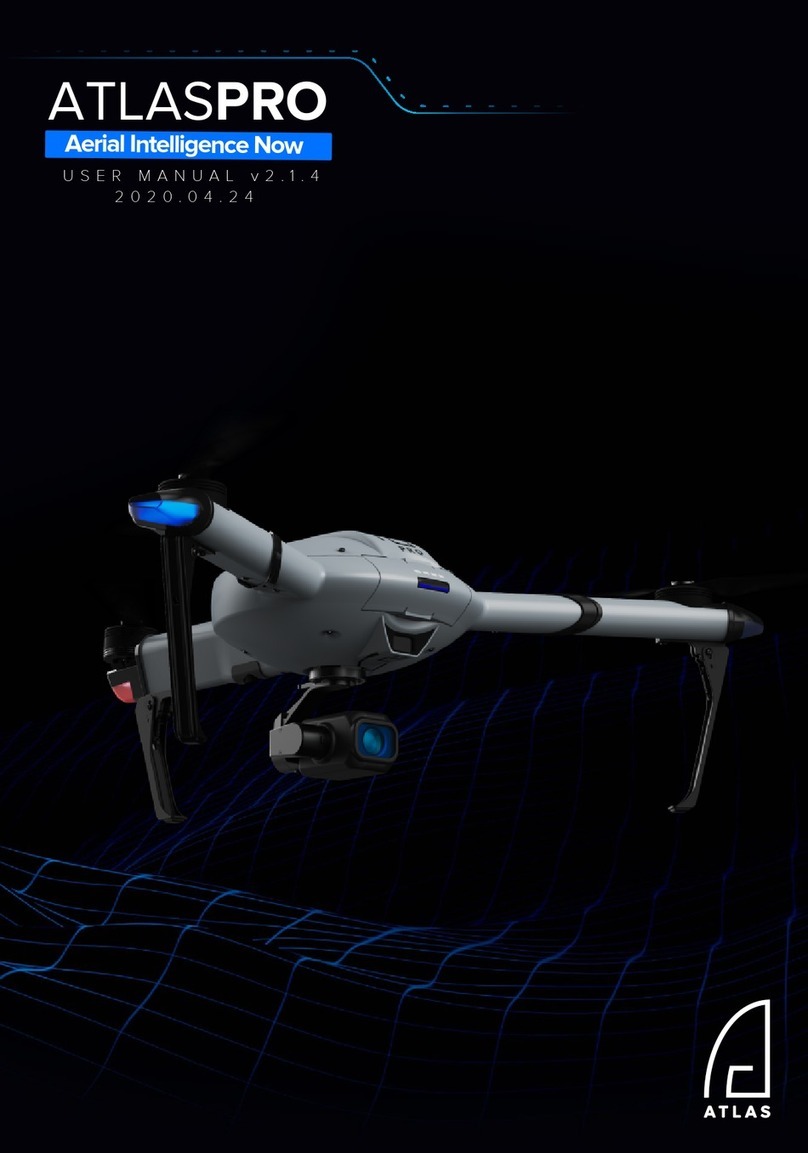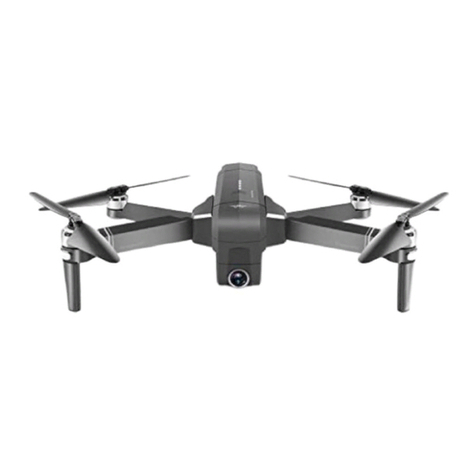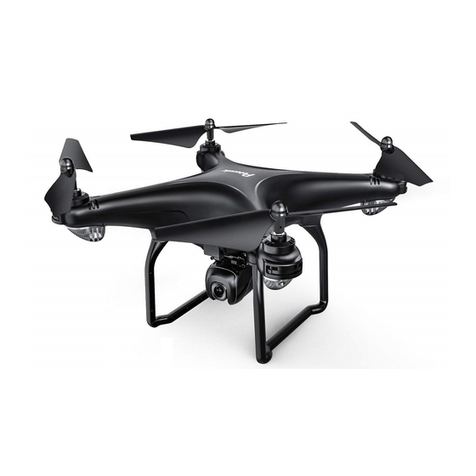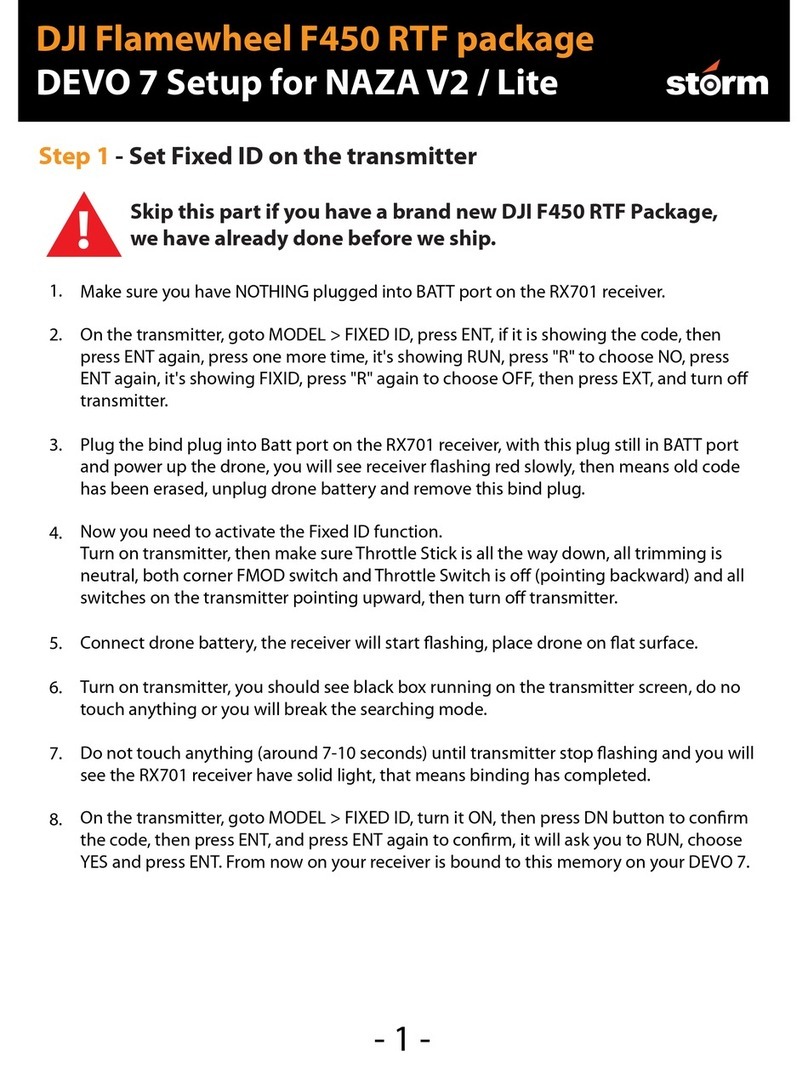
The default flight control is known as Mode 2. The left stick controls the aircraft's
altitude and heading, while the right stick controls its forward, backward, left and
right movements. The gimbal dial controls the camera's tilt.
Press the Flight Pause button for emergency braking during flight.
3. Charging the Batteries
1. Downloading the DJI GO 4 App and Watching Tutorial
Videos
Search for ‘DJI GO 4’ in the App Store or Google
Play, or scan the QR code to download the app
on your mobile device.
Watch the tutorial videos at www.dji.com/mavic-air
or in the DJI GO 4 App by tapping the icon in the
top right corner of your screen.
4. Preparing the Remote Controller 6. Flight
5. Preparing for Takeoff
DJI GO 4
2. Preparing the Aircraft
Remove the gimbal
protector from the
camera.
● It is recommended to have the gimbal protector attached when the aircraft is not in use. Make sure
the gimbal is horizontal when mounting or removing the gimbal protector.
● Ensure the landing gear is properly unfolded before use. Otherwise, the built-in antenna may be
affected causing serious problems to the video link. Make sure you fold the landing gears first
before folding the aircraft arms.
● When fully charged, insert the Intelligent Flight Battery into the aircraft until you hear a click,
ensuring that the battery is mounted firmly in place.
● The optional Battery Charging Hub can charge up to four batteries simultaneously. Please visit the
official DJI Online Store to learn more.
● Remove the remote controller cable before charging. Connect the provided communication cable
with the USB Adapter to the Charger.
Optimal Transmission Range
Press once to check the battery
level. Press once, then again and
hold to turn on/off.
Press the Power button once to
check the current battery level.
Press once, then again and hold to
turn on/off the remote controller.
Place one end of the remote
controller cable to the end of
the slot on the side of the
remote controller.
Attach your mobile
device within the
clamps.
● Ensure the control sticks are firmly mounted.
● The remote controller cable with the Lightning Connector is mounted by default. Use the
appropriate cable for your mobile devide to connect to the remote controller.
● When using an iPad or tablet, use the USB port on the remote controller.
● Do not use the Micro USB and the USB ports simultaneously for linking video. Disconnect one port
from the video-linking device if the other port is in use.
Use your DJI account to activate the aircraft. Activation requires an internet connection.
Internet
Launch the DJI GO 4 App
DJI GO 4
App
Power on the remote
controller
Power on the aircraft
The motors can only be stopped mid-flight when the flight controller detects critical error.
Before taking off, make sure the Aircraft Status
Bar in the DJI GO 4 app displays ‘Ready to Go’.
● Turn on your mobile device's Wi-Fi and enter the Wi-Fi password shown on the aircraft to connect to
the Mavic Air network if for any reason you cannot scan the QR code.
● When using Wi-Fi in a wide open area with no Electro-Magnetic Interference, transmission distance
is approximately 262 ft (80 m) at an altitude of 164 ft (50 m).
● Linking is required when switching back to Remote Control mode. The Wi-Fi frequency of your
mobile device can be set to 2.4 GHz or 5 GHz. Set your Wi-Fi to 5 GHz for less interference. Once
connected to the Mavic Air, you can change your Wi-Fi password or reset your Wi-Fi connection.
(Refer to the User Manual for more information)
● Controlling flight with Virtual Joysticks on your mobile device via Wi-Fi
● Remote Controller Operation
● Check the Battery Levels and Power On/Off ● In the DJI GO 4 App
1. Power on the aircraft.
2. Press and hold the Function Button on the aircraft for four seconds until you hear
a double beep, switching to Wi-Fi control mode.
3. Launch the DJI GO 4 app and tap the icon in the top right corner of your screen.
Next, scan the Wi-Fi QR Code on the aircraft to start the connection.
4. Tap Auto Takeoff.
5. Now you can fly the aircraft with touch control via Virtual Joysticks.
● Watch the tutorial in the DJI GO 4 app or on the Official DJI website to learn more.
● Always set an appropriate RTH altitude before takeoff. When the aircraft is returning to the
Home Point, you should guide it with the control sticks.
7. Fly Safe
Unfold the antennas and
mobile device clamps,
then attach the control sticks.
Mavic_XXX
DJI GO 4
App
Unfolded
DJI GO 4 supports iOS 9.0 (or later) or Android 4.4 (or later).
Unfold the front
arms and landing
gears.
It is recommended to mount the propeller guards when
flying in Beginner Mode or indoors to ensure better safety.
Refer to the Mavic Air Propeller Guards User Guide to
learn more. It’s important to understand basic flight guidelines, for the safety of both you and
those around you. Don't forget to read the Disclaimer and Safety Guidelines.
MAVIC is a trademark of DJI.
Copyright © 2018 DJI All Rights Reserved.
Tutorial Videos
Use the provided charger to full charge the
Intelligent Flight Battery before first time use.
Attach the Intelligent Flight Battery to the battery charger via the port as shown above.
Intelligent Flight Battery Charging time:
53 minutes in environments at temperatures between 15° to 40°C;
1 hour and 40 minutes in environments at temperatures between 5° to 15°C.
Remote Controller Charging time: 2.5 hours
Remove the Intelligent Flight Battery
from the aircraft.
High
Low Battery Level High
Low Battery Level
Strong Weak
Ready to Go (GPS)
● Auto Takeoff / Landing
● Manual Takeoff / Landing
Combination stick command
to start/stop the motors
OR
Left stick up (slowly)
to take off
Left stick down (slowly) until you
touch the ground
Hold a few seconds to stop the
motors
Auto Takeoff Auto Landing
Set the antennas parallel to each other
Normal
TapFly
QuickShot
Tripod
ActiveTrack
SmartCapture
Fly in Open
Areas
Strong GPS
Signal
Maintain Line
of Sight
Avoid flying over or near obstacles, crowds, high voltage power lines, trees
or bodies of water.
DO NOT fly near strong electromagnetic sources such as power lines and
base stations as it may affect the onboard compass.
DO NOT use the aircraft in adverse weather conditions such as rain, snow,
fog and wind speeds exceeding 10 m/s or 22 mph.
Fly Below 400 Feet
(120 m)
Learn more at:
http://flysafe.dji.com/no-fly
Stay away from the rotating propellers
and motors.
No Fly Zone
120m
≥10 m/s
1
2
1 1
Left Stick
Up
Down
Turn RightTurn Left
Right Stick Forward
Backward
RightLeft
A
USB Adapter
B
Power Outlet
100 - 240V
USB-C Cable
B
A
Designed by DJI. Printed in China.
3
2
Unfold the rear arms.

